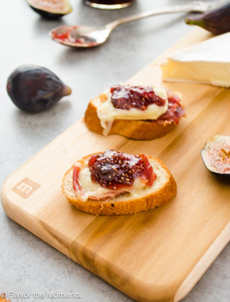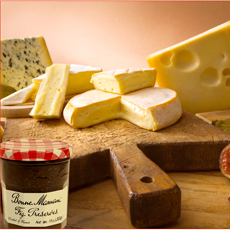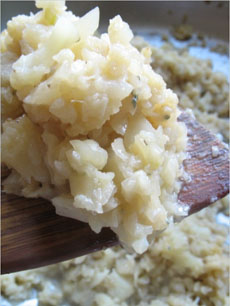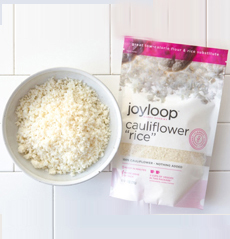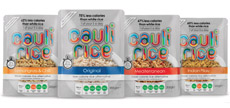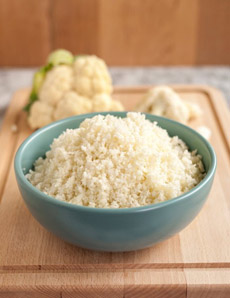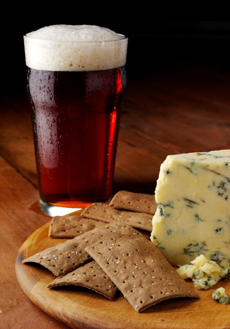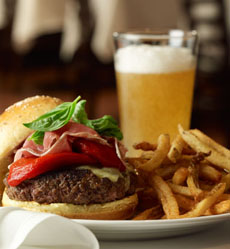|

[1] Keep a bowl of Halos or other mandarins on your kitchen counter, for a nutritious, 35-calorie grab-and-go snack (photos #1 and #2 © Wonderful Foods).

[2] Halos, unpeeled and peeled.
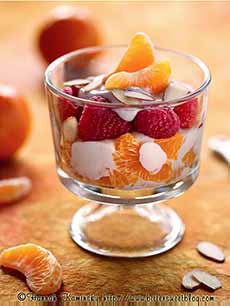
[3] A yogurt parfait with clementine mandarins and raspberries (photo © Hannah Kaminsky | Bittersweet Blog).
|
|
April is the end of the season for the sweet little mandarins called Halos.
We’ve been enjoying them by the bagful. In addition to flavor and nutrition, they keep us from eating refined sugar snacks.
They deserve their halo!
WHAT ARE HALOS?
The fruit aisle can be confusing. Depending on the store, you can find clementines, Cuties, Halos, Dimples, tangerines and mandarin “oranges.”
Nota bene: mandarins are not oranges, but a different species. More about that in a minute.
Welcome to the world of single-serving, easy to peel, sweet and juicy—and branded—citrus.
Halos, Cuties, and Sweeties are mandarins from California, different brand names for what are often clementines.
Don’t call them mandarin oranges!
While both are from the genus Citrus, mandarins are a different species, just like broccoli and cabbage—both members of the genus Brassica—are different species.
Here’s the difference (Produce Pete and Wikipedia take note!).
YOU CAN SEE THE DIFFERENCE BETWEEN MANDARINS & ORANGES
From a hybridization perspective, the mandarin is a progenitor of the orange*.
The orange is a cross between a mandarin and a pomelo, created long ago in China.
From a visual perspective:
Oranges are medium to large round or ovoid shapes covered with a thick peel that can take time to remove. They are in the genus Citrus, with separate species (e.g. Citrus sinensis, the sweet orange group, includes the common sweet orange, blood orange, and navel orange).
Sometimes they’re sweet, and sometimes they aren’t; you don’t know until you buy and try.
Mandarins are small and roundish with flatness on the top and bottom, and a loose, easy-to-peel skin. They are in the genus/species Citrus reticulata.
The mandarin from California are reliably sweet and usually seedless. That’s why we prefer mandarins like Halos to navel oranges, which are a a spin on the sweetness roulette wheel.
|
WHAT ARE THE DIFFERENT CLEMENTINE NAMES ALL ABOUT?
Why the different names? Branding! The names are not varieties, but trademarked names, encouraging the consumer to look specifically for Cuties or Halos.
The Cuties trademark is owned by Sun Pacific.
The Halos trademark, also “Wonderful Halos,” is owned by Wonderdful Citrus, which also owns the trademarks POM Wonderful pomegranates, Wonderful Pistachios, Wonderful Almonds and Sweet Scarlett red grapefruit (also a passion of ours). It is the #1 mandarin brand in the U.S. and 100% California-grown (some producers may augment their domestic supply with imported fruit). Even their website sounds delicious: Wonderful.com.
The Dimples trademark is owned by Cecelia Packing. Dimples are a branded name for the Gold Nugget mandarin. Their season is later than clementines, beginning in April.
Tangerine is a different species of mandarins,—Citrus tangerina—and not a brand name.
Murcott is a mandarin/sweet orange hybrid. In the trade they are referred to as tangor, “tang” from tangerine and “or” from orange. They are also called the temple orange. Their thick rind is easy to peel. Some are trademarked as Golden Nugget, some as Tango.
February 15th is National Clementine Day.
|
|
Now for a twist:
The season for California clementines is November to January.
A similar mandarin, the murcott, is available from February to April, and they substitute for Cuties and Halos clementines during that time.
Non-branded murcotts are often called clementines at retail, because the name is more familiar to consumers and it sells better.
If you see clementines after April, they are likely imported.
HOW TO USE HALOS
Like oranges, mandarins are very versatile. The first thing anyone would think of is hand fruit. The term refers to fruits small enough to eat from the palm of your hand, such as apples, pears and stone fruits—but not pineapples or other fruits that need to be cut up.
But why stop there? Use luscious mandarins:
On cold or hot cereal.
Sliced in a cup of tea instead of lemon.
Juiced, or added to smoothies, cocktails and mulled wine.
In fruit salads, green salads and Asian chicken salads.
In stir-fries with proteins and/or vegetables.
In cake batter or cheesecake batter, or as a garnish on top.
Atop single crust pies or tarts, in segments or slices (we cover the entire top of a cream or custard pie with slices).
In puddings, gelatin and other desserts.
As a garnishes on desserts and beverages.
To find a store near you, here’s the Halos store locator.
MANDARIN TIPS
For garnishing, you can separate the segments or slice horizontally across the peeled fruit for wheels.
Because of their thin skin, mandarins don’t keep as long as oranges. Store them in the fridge and enjoy them within two weeks.
|
|

[3] Toss mandarin segments into a green salad (photo © Wonderful Foods)

[4] Garnishing a white chocolate tart with a macadamia crust. Here’s the recipe from Rodale’s Organic Life.
|
THE HISTORY OF MANDARINS
Thanks to Etienne Rabe, Vice President, Agronomy, for Wonderful Citrus, for this history of mandarins:
It’s difficult to pinpoint the exact origin of the name, but we know that mandarins were grown for many centuries in China. The first mandarin tree was brought to England from China in 1805, and its progeny went from England to Malta, then to Sicily and continental Italy.
Little information is available about mandarins in Chinese literature, but as far back as 1178 C.E., Chinese author Han Yen-chih described 27 different varieties of mandarins.
The clementine originated in North Africa and made their way to Morocco in the 1960s and Spain in the 1970s. Spain started exporting them to the East Coast of the U.S. in the 1990s.
The murcott variety was bred in Morocco and introduced to the U.S. in the mid-1990s.
As imported clementines became popular, American citrus growers saw the potential of the fruit…and how lucky we are!
________________
*The binomial classification of both mandarins and oranges branches at the species level. Both are in the genus Citrus. The pomelo is also a member of the Citrus genus. Its species is
Citrus maxima. The entire taxonomy: Kingdom Plantae, Clade Tracheophytes, Clade Angiosperms, Clade Eudicots, Clade Rosids, Order Sapindales, Family Rutaceae, Subfamily Auranntioideae, Tribe Citreae, Subtribe Citrinae, Genus Citrus.
CHECK OUT WHAT’S HAPPENING ON OUR HOME PAGE, THENIBBLE.COM.
|
|
